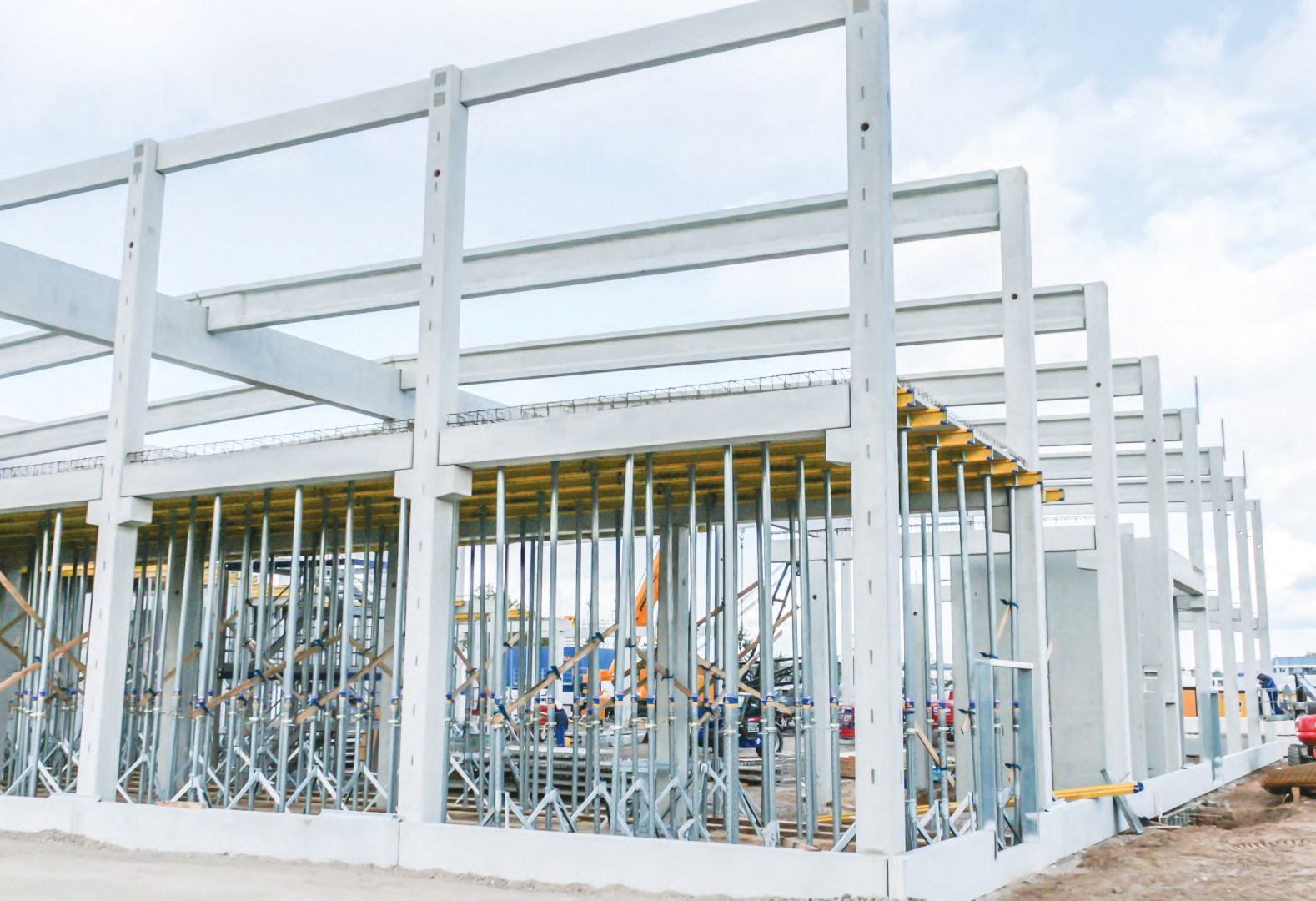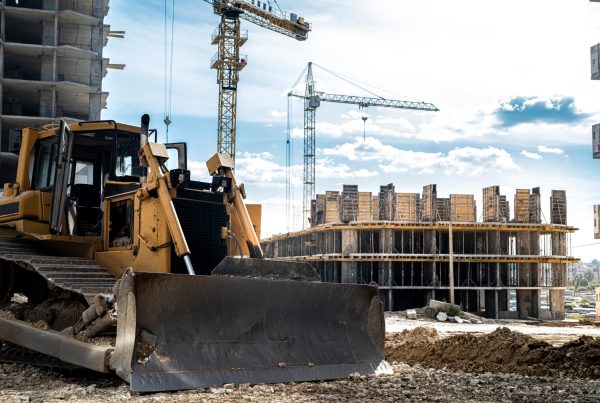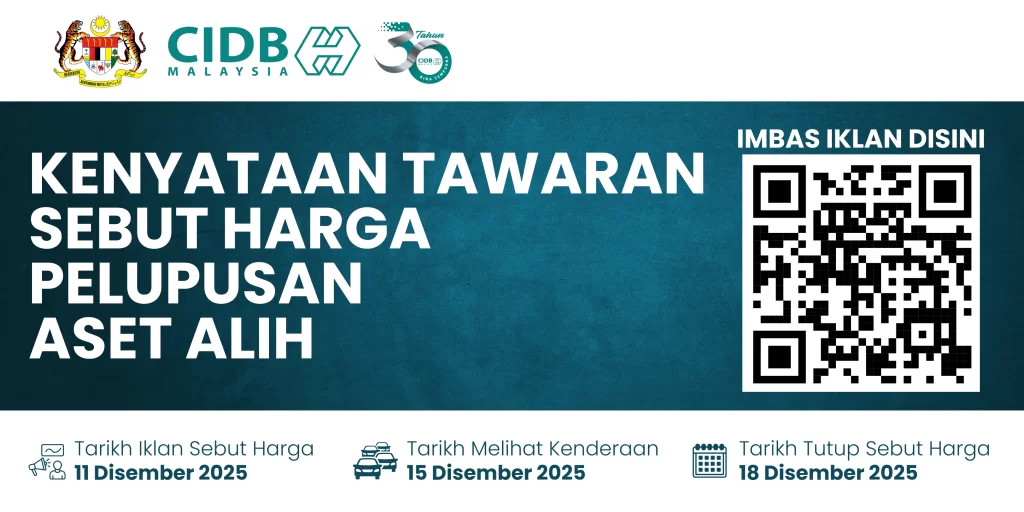In his keynote speech at ICTC 2021, CIDB Chief Executive Datuk Ir. Ahmad ‘Asri Abdul Hamid shared why the time to adopt the new construction technologies is now.
The construction industry is an economic driver of both developed and emerging nations. Construction drives job growth and improved productivity as it creates solutions to address social, energy, and environmental challenges worldwide. In the ‘Future of Construction’ report dated September 2021, Oxford Economics stated that spending on construction accounted for 13% of the global GDP in 2020, and they expect this to reach over 13.5% in 2030.
The construction sector in Malaysia employs 1.2 million people, accounting for 9.5 per cent of the overall workforce. It contributes 4.6 per cent directly to the national economy and has a multiplier effect of 2.03 due to its connections to over 120 different industries, of which 90% of the firms comprise SMEs (Small and Medium Enterprises) (SMEs). Due to the Covid-19 pandemic and the movement control orders enforced, the Malaysian construction industry GDP decreased 19.4 per cent in 2020.
Unfortunately, the construction industry has yet to embrace digitalisation in a significant manner, unlike other industries that had radically adopted new technology to survive during the pandemic.
The construction industry has an average productivity rate that is lower than most other sectors. The reason for this is the limited adoption of new technologies or best practices and the continued reliance on low-income foreign labour. This leads us to believe that improving workforce quality, technology adoption, and business processes in construction can enhance productivity rates.
Governments and stakeholders worldwide realised that change is necessary now more than ever, especially during this pandemic which has revealed the many areas that need our attention. The World Economic Forum established an initiative called the ‘Future of Construction’, which encourages all stakeholders to collaborate and find innovative solutions towards higher productivity, greater sustainability and enhanced affordability, leading to better build quality at lower costs.
Professor Klaus Schwab, the World Economic Forum’s founder and executive chairman, stated that the pandemic represented a rare but limited window of opportunity to reflect, reimagine, and reset our world.
The pandemic has been a huge wake-up call to all of us. Technology must be the primary driver of the industry’s ongoing evolution. That is why ICTC 2021 carried the theme ‘Impact of Covid-19 Pandemic on Technology Adoption’.

The Malaysian Transformation Roadmap Journey
The construction industry in Malaysia embarked on a transformation process when the Construction Industry Transformation Plan (CITP) was introduced in 2016. The 5-year plan was conceived to transform the Malaysian construction industry into one that is world-class and values productivity, sustainability, and quality by 2020.
The CITP’s four strategic thrusts below aim to approach the transformation process holistically:
- Quality, Safety and Professionalism;
- Environmental Sustainability;
- Productivity; and
- Internationalisation & Competitiveness
The goal was ambitious: to overhaul the entire construction value chain through digitalisation, innovation, and overall quality improvement, supported by industry capacity creation, education, retraining, certification, and more. The ultimate goal is to develop a more world-class culture in the construction sector, ensuring higher levels of quality and productivity, fewer workplace accidents and smaller environmental footprint.
I am pleased to report that the CITP achieved a success rate of 90% or more across all its efforts under its four strategic thrusts. After the five-year plan concluded, the general construction workers’ productivity increased from RM27,000 per worker in 2014 to RM45,000 in 2020.
Mapping the Way Forward
While the CITP has achieved significant milestones, we want to ensure that the Malaysian construction industry continues to evolve with the times Building on the foundation of CITP, CIDB has launched the Construction Strategy Plan 4.0, a five-year plan to transform the Malaysian construction industry by empowering smart construction for the future society. The vision is for Malaysia to be the region’s leader in implementing Construction 4.0.
The four strategic thrusts below will drive the implementation of the Construction Strategy Plan 4.0:
- Building Capacity
- Research, Innovation, Commercialisation and Entrepreneurship
- Smart Integrated Technology, Innovation & Infrastructure
- Enhanced Business Environment
These will form the ecosystem to foster the necessary changes. The Plan also identifies 12 emerging technologies that will change the face of construction, which are :
- Building Information Modelling (BIM)
- Pre-fabrication and Modular Construction
- Autonomous Construction
- Augmented Reality & Virtualisation
- Cloud and Realtime Collaboration
- 3D Scanning and Photogrammetry
- Big Data & Predictive Analysis
- Internet of Things
- 3D Printing and Additive Manufacturing
- Advanced building materials
- Blockchain
- Artificial Intelligence
The National Construction Policy 2030 will take this even further, focusing on several key areas to bring the construction industry forward. Themed ‘Digitising the Construction Sector’ NCP 2030 will focus on accelerating technology adoption in all work processes before, during and after construction.
We are particularly interested in supporting the construction industry to adopt cutting-edge construction technologies. Our goal is for the industry to transform how infrastructure, real estate, and other built assets are designed, constructed, operated, and maintained.

Increasing Productivity Through the use of Technology
Adopting such innovations and new technology is required for businesses to remain competitive and deliver projects on time and within budget. And this shift must occur swiftly and on a large scale.
For the past few years, CIDB has been actively driving the adoption of two major technologies: the Industrialised Building System (IBS) and Building Information Modelling (BIM).
By using IBS, the industry can benefit from shorter project completion timelines and higher work quality, resulting in greater cost-efficiency.
On the other hand, BIM is one of the essential technologies that significantly impact the efficiency of the built environment’s full life cycle management. BIM accurately represents the built environment in 3-D on computers, and information sharing among all stakeholders are real-time and comprehensive.
Several steps have been taken to facilitate the adoption of BIM. These include establishing the myBIM Centre as a one-stop resource for reference, support, services, and capacity building. Technical training is held regularly, and partnerships with several universities have been established to train the future generation of construction personnel.
When implemented together, IBS and BIM will effectively transform the construction sector.
New construction technologies, such as the Internet of Things (IoT), artificial intelligence (AI), augmented reality (AR), 3D printing, and other cutting-edge technologies, represent new opportunities to boost the construction industry’s production and efficiency.
Following the goals of the National Construction Plan 2030 and the Construction 4.0 Strategic Plan 2025, CIDB will continue to advocate for the adoption of these technologies in the Malaysian construction industry.
It’s Time to Change
The time for change is now. Do we want to go backwards by keeping the same old paradigms and ways of doing things, or do we want to take advantage of all the new technologies available today? Those who hesitate risk being left behind and becoming irrelevant. Let’s answer the clarion call for change together to ensure a brighter future for our industry and country.
















